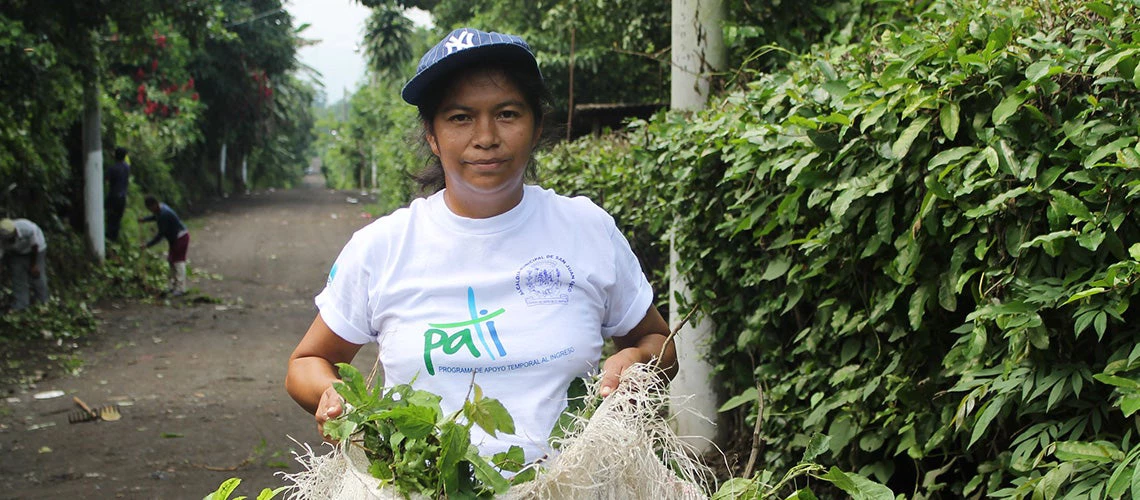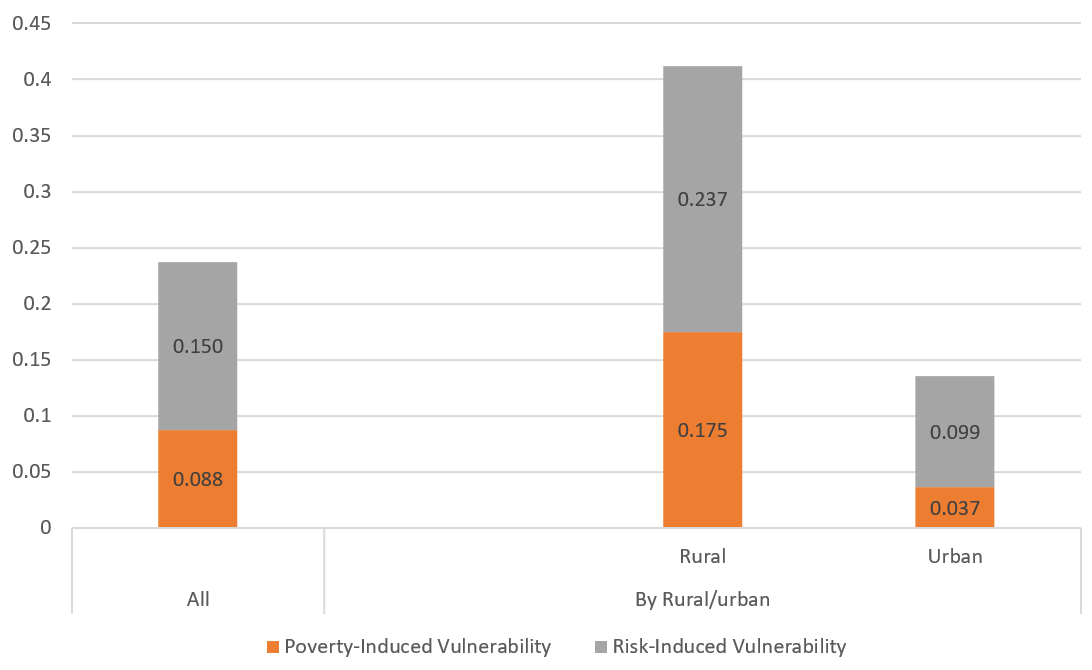 Beneficiary of the Temporary Income Support Program in El Salvador. Source: World Bank
Beneficiary of the Temporary Income Support Program in El Salvador. Source: World Bank
Between 1970 and 2019, the number of disasters increased by a factor of five, and the poor were affected the most. Since 1997, the number of recorded conflicts around the world has increased to the point that by 2022, one-quarter of humanity lived in conflict-affected areas . Projections indicate that by 2030 up to two-thirds of the global extreme poor will be living in fragile and conflict-affected situations. The vulnerabilities that this implies are manyfold: deaths, displacement, housing destruction, job losses, and others.
These global issues are relevant for El Salvador, one of the most risk-exposed countries in the world. Extreme climatic events, such as earthquakes, floods, hurricanes, and droughts (particularly in the Dry Corridor), make the country especially vulnerable . Against this scenario, a sizable segment of the non-poor population lives on the brink of poverty. They could be pushed into it if exposed to the hazards mentioned above. That requires ways to measure poverty, incorporating vulnerability into the analysis to assess the population’s well-being.
Targeting the vulnerable: El Salvador case
The concept of vulnerability is not new, but somehow development economists have mostly focused on poverty and inequality statistics, paying less attention to the vulnerable. This approach is changing, and the World Bank has played a role in it. Recently, a World Bank team explored vulnerability in El Salvador and found that by 2019, more households were in vulnerable conditions than those in poverty. Such vulnerability is predominantly rural: nearly 4 out of 10 people in rural areas live in households prone to fall into poverty, but this happens for only 1 out of 8 people in urban areas .
An important share of the population needs to be targeted by forward-looking shock-responsive social protection programs. But, if targeting the poor is challenging, targeting the vulnerable is even more complicated. Once a shock hits, policymakers must quickly identify the most vulnerable population to reach them with aid. This would be neither immediate nor straightforward. During regular times, in turn, it is important to push vulnerable households out of vulnerability to increase resilience among the population. But without proper identification, the task remains impossible.
In this study, vulnerability is measured with the probability of falling into poverty. The method allows us to understand the sources of vulnerability by further distinguishing between risk-induced and poverty-induced. The risks, in turn, can also be either linked to “idiosyncratic” or “covariate” shocks. The former occurs in individual households (for example, due to the death of a household member), and the latter refers to shocks that affect entire communities (such as disasters hitting a certain region).
In El Salvador, risk-induced vulnerability played a more significant role in overall vulnerability, and shocks at the household level are more common than municipality-level shocks, especially in urban areas . The ratio of risk-induced to poverty-induced vulnerability is almost double nationally, but it increases to almost three times in urban areas. These results suggest that vulnerability is mainly driven by hazards rather than by low access to assets and low human capital.
Drivers of vulnerability to poverty in El Salvador (2019)
Policy implications in El Salvador
This prevalence of risk-induced vulnerability has sensible policy implications. It calls for prioritizing policies that strengthen social assistance and cash transfer programs that are flexible to adjust to shocks, such as shock-responsive social protection systems.
When vulnerability is mostly risk-induced, as in the case of El Salvador, social insurance mechanisms and a focus on risk reduction strategies are more appropriate . In addition, policymakers should encourage access to financial services, such as savings and credit. Ultimately, decreasing vulnerability to poverty is about decreasing vulnerability before and after a shock hits, recognizing that addressing shocks that affect households and communities require different policy approaches
To establish shock-responsive social protection systems some entry-points should be considered, such as the evidence generation that allows identifying the vulnerable population. The information should be linked to existing database management systems, and a revision of existing programs through a vulnerability lens is also recommended.
Addressing vulnerability also requires efficient inter-agency coordination and strong partnerships between different types of institutions, public, private, and the multilateral community.
Subscribe and receive a weekly article
Related articles





Join the Conversation